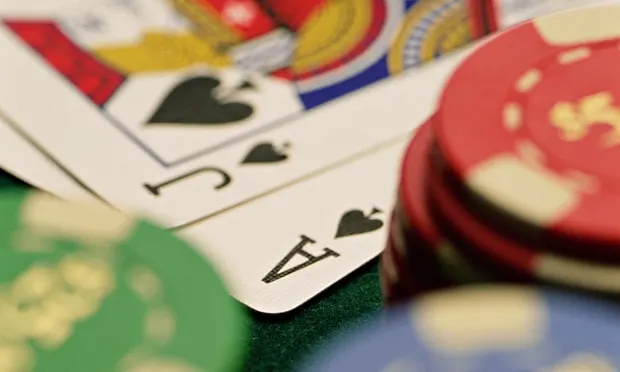
The thrill of the hand reveal, the mind games of bluffing, A Step-by-Step Guide to Learning Poker – poker has captivated players for centuries. But for beginners, this exciting world can seem shrouded in mystery. Fear not, aspiring card sharks! This step-by-step guide will equip you with the knowledge and skills to navigate your way from poker newbie to confident contender.
Mastering the Basics: A Foundation for Success
Our journey begins with the fundamentals. Buckle up as we explore the essential elements that form the bedrock of your poker education:
-
Texas Hold’em: Your Gateway Game: While there are numerous poker variations, Texas Hold’em reigns supreme in popularity. Here, players are dealt two hole cards face down and compete to build the best five-card hand using a combination of their hole cards and five community cards dealt face up in the center of the table. Understanding the betting rounds (pre-flop, flop, turn, and river) and actions available (check, call, raise, fold) is crucial.
-
Hand Rankings: Knowing your hands is paramount. Familiarize yourself with the ten basic poker hands, ranked from highest to lowest: Royal Flush, Straight Flush, Four of a Kind, Full House, Flush, Straight, Three of a Kind, Two Pair, One Pair, and High Card. Print a cheat sheet and memorize them for quick reference.
-
Betting Strategies: Mastering the art of betting goes beyond simply understanding the options. Learn about concepts like pot odds, implied odds, and bet sizing. These will help you determine when to call, raise, or fold based on the potential value of the pot and your perceived hand strength.
Bonus Tip: There are numerous free resources available online that offer interactive tutorials, hand rankings charts, and even quizzes to test your knowledge.
Sharpening Your Skills: Practice Makes Perfect
Now that you’re armed with the basics, it’s time to refine your skills. Here’s how to get some hands-on experience:
-
Play with Play Money: Most online poker platforms offer play money tables, a fantastic space to practice without risking real money. Here, you can experiment with strategies, test your reads on opponents, and gain confidence in a stress-free environment.
-
Home Games with Friends: Gather your poker-curious buddies and host a friendly home game. Set a low buy-in (or play for chips) and focus on having fun while learning the ropes together.
-
Low-Stakes Online Games: Once you feel comfortable with play money, consider venturing into low-stakes online games. Start with micro stakes (the absolute lowest buy-ins) to minimize financial risk while experiencing the thrill of real-world competition.
Remember: Focus on learning and making good decisions, not just winning. Analyze your hands after each session, identify areas for improvement, and adjust your approach accordingly.
Embracing the Art of Reading the Game: Beyond the Cards
Poker isn’t just about the cards you hold; it’s about understanding the players you face. Here’s how to become a master observer:
-
Understanding Tells: A tell is a subtle (or sometimes not-so-subtle) physical cue a player reveals that might hint at the strength of their hand. Learn to observe body language, betting patterns, and verbal ticks to gain an edge over your opponents.
-
Table Dynamics: Pay attention to how other players interact with each other. Who’s loose and aggressive? Who’s tight and passive? How does the table dynamic change as the game progresses? This awareness will help you tailor your strategy to each opponent.
-
Positional Awareness: Your seating position at the table significantly impacts your gameplay. Players in late position (closer to the dealer) have more information based on the actions of those before them. Utilize this advantage to make informed decisions.
Remember: Reading players is an ongoing process. Don’t expect overnight success. Observe consistently, analyze your findings, and adapt your strategies based on the information you gather.
Leveling Up: Advanced Strategies for Aspiring Pros
As you gain experience, explore advanced strategies to elevate your game:
-
Bluffing: The art of bluffing involves placing a bet that suggests a strong hand when you actually hold a weak one. It can be a powerful tool, but use it sparingly and strategically to maximize its effectiveness.
-
Semi-Bluffing: This involves betting on a hand with some potential to improve later in the hand. This strategy allows you to apply pressure while offering some chance of actually building a strong hand.
-
Bankroll Management: This refers to managing your playing bankroll effectively. Develop a plan that ensures you have enough funds to withstand inevitable losing streaks, allowing you to play with confidence and avoid financial.
